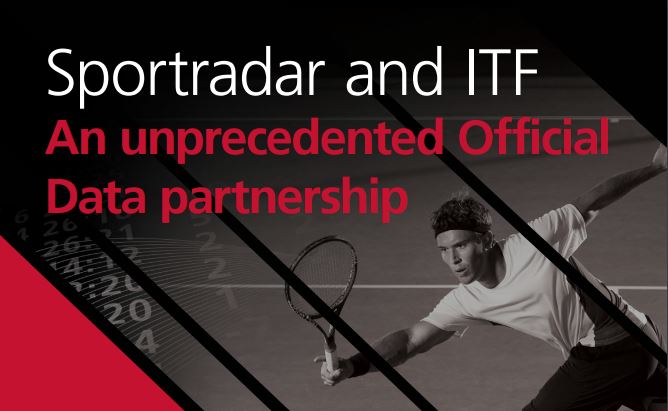Understanding the Buyer’s Journey in B2B Marketing: The Key to Creating Great Content
The presence of content marketing in the daily life of a consumer has increased drastically in recent years. In fact, 76% of B2C marketers and 88% of B2B marketers implement content strategy into their marketing mix, according to the Content Marketing Institute. However, while many businesses are making use of content marketing, it does not necessarily mean that they are successful at it.
In order to implement an effective content marketing campaign that amplifies your content, it is essential that you create content for each stage of the buyer’s journey. A buyer goes through 3 different stages (awareness, consideration, and decision) before making a purchase. By tailoring your content to potential buyers in each stage of the journey, you are more likely to turn leads for your business into repeat customers.
What is Content Marketing Really About?
In its simplest form, content marketing is the creation and distribution of content. However, it’s really much more than that. In order for content to truly do its job (i.e. “drive profitable customer action”), it needs to be relevant to the buyer that it is intended for. Essentially, a successful content marketing campaign is one that provides value to a specific target.
So how do you make sure your content is relevant for your target audience? Enter the three stages of the buyer’s journey!
The Awareness Stage
When potential buyers are in the awareness stage, they have just identified an issue or need. In order to engage with buyers in this first stage, your content should bring awareness to a specific problem before aligning this problem with various business-specific issues.
To help the customers better understand this issue or need, it’s important to stick to contentthat is educational and can provide further insight. This is not the time to introduce your product – that comes later. For now, the best way to provide value to buyers in the awareness stage is by demonstrating your knowledge on what their pain points are.
Types of Content
Written educational content, such as reports done on original research, white papers, ebooks, and blog posts are the easiest options when it comes to capturing the attention of your target audience in the awareness stage.
Do not limit yourself to only writing content, though. You can also include various other forms of media such as courses and certifications, social media content, videos, and other forms of educational content.
Example 1
In this first example, The Happy Startup School provides its target market with a free eBook. This establishes The Happy Startup School as an authority in the entrepreneurial space by addressing all the pain points that their potential customers have. By providing this free information, a buyer will be more likely to consider their services in the next stage of the buyer’s journey.
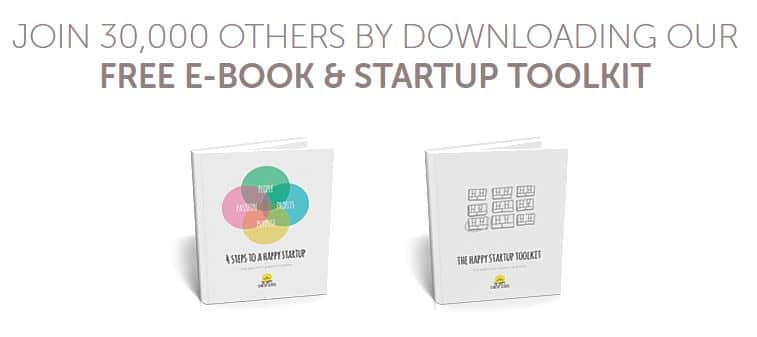
Example 2
Our second example comes from the TransUnion SmartMove blog. In this blog post, SmartMove uses original research to cover a variety of pain points that landlords have to deal with: lost rent, property damage, eviction, and tenant turnover. By supplying further information on these identified issues, they are effectively capturing the attention of their target audience in the awareness stage.
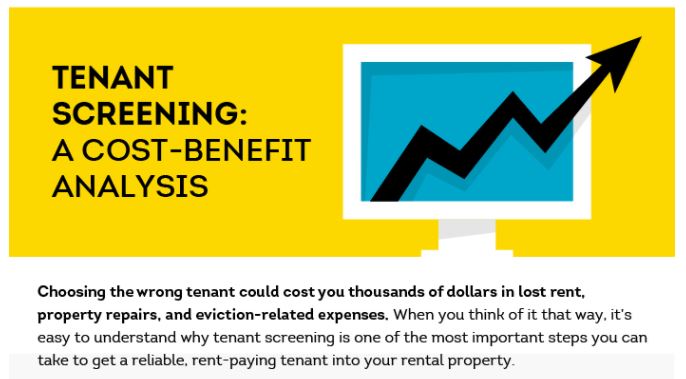
The Consideration Stage
As potential buyers enter the consideration stage, the goal of content marketing in B2B changes to helping the buyers identify your product/service as the solution to the issue they discovered in the awareness stage. Now is the time to brag about the many benefits of your product/service.
It’s important to keep in mind the pain points that buyers identified in the previous stage. Simply stating all the benefits of your product won’t provide any value to your potential buyer. Explain how your product specifically addresses their pain points.
As the name suggests, potential buyers are considering various options in the consideration stage. The goal of your content should be to make your product/service stand out – not by listing features, but rather by listing how your product/service will resolve the issue potential buyers are experiencing.
Types of Content
Customers in this part of the purchase process are looking to learn more about the various solutions to their problems. Consequently, the most effective content types are those that clearly demonstrate the benefits of your product/service: product comparisons, case studies, live interactions, webinars, and expert guides.
Example 1
A great way to show that your product/service is the best option is by publishing a comparison white paper. Odoo does this by comparing its own platform with three of its competitors. By clearly stating the benefits of their service, Odoo is attempting to move potential buyers along into the decision stage of the buyer’s journey.

Example 2
As Sportradar demonstrates, another great way to prove that your product/service is beneficial is by publishing a case study. In this case study, Sportradar details its successful partnership with ITF and how its services provided an excellent solution for ITF. This allows potential buyers to better understand the benefits that Sportradar could provide for them and their companies.
The Decision Stage
The final stage in the buyer’s journey is the decision stage – the point at which they decide which product/service they will purchase. You have successfully guided your potential clients through the awareness and consideration stages by addressing their pain points and explaining how your product/service will benefit them. Now it’s time to close the deal.
The focus at this stage is on validating why it is worthwhile to purchase your product. You can do this by continuing communication with your potential buyers as they make their purchase decisions.
Types of Content
Customers are looking to validate that your product is the right choice to alleviate their identified pain point. Engage with customers by utilizing content such as free trials and downloads, demos, discounts, and estimate requests. Make sure that your product is top of mind when they do ultimately make the decision to purchase.
Example 1
Our first example comes to us from right here at Mondovo. This free trial allows potential buyers to try out the solution and input their own data. By allowing users to input their data and see how the service would actually work for them, Mondovo is making it easy for potential buyers to choose them when making their purchase decision.
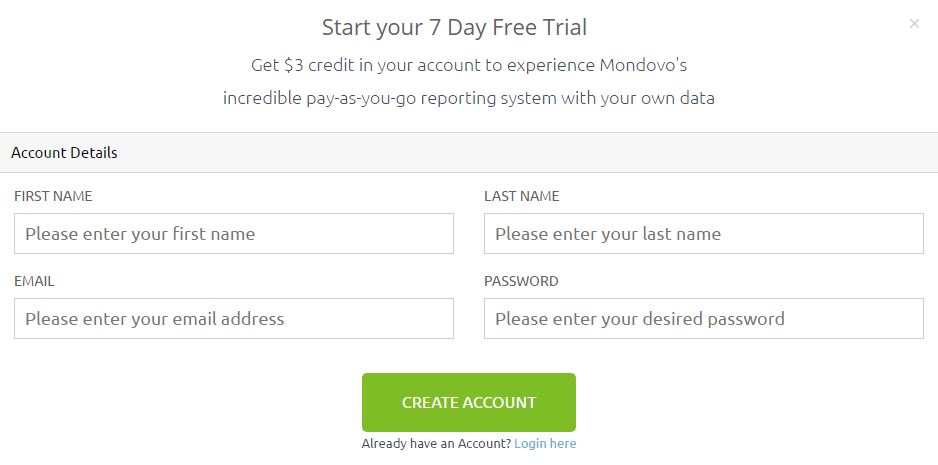
Example 2
Live demos allow you to show potential buyers exactly how your product/service will work for them. ReadyTalk offers live demos in two ways. The first is a general live demo that is prescheduled and intended for a larger audience. If you’re looking for a more personalized approach, they also offer private demos. In both types, ReadyTalk clearly demonstrates the benefits of their product in a way that drives purchases.
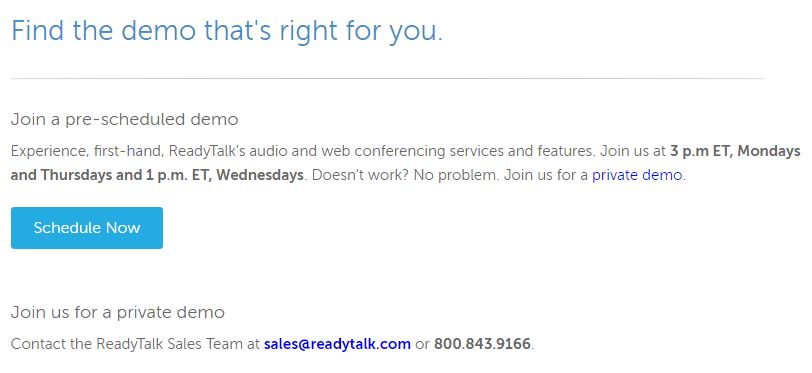
Conclusion
The one thing in B2B marketing that sets apart an average content marketing campaign from an outstanding one is an understanding of the buyer and what stage they’re at in their purchase decision. This, along with an in-depth knowledge of customer pain points, should drive your content marketing strategy. When done effectively, your content will guide your potential buyers through each stage of the buyer’s journey and ultimately to the point of purchasing your product/service.


